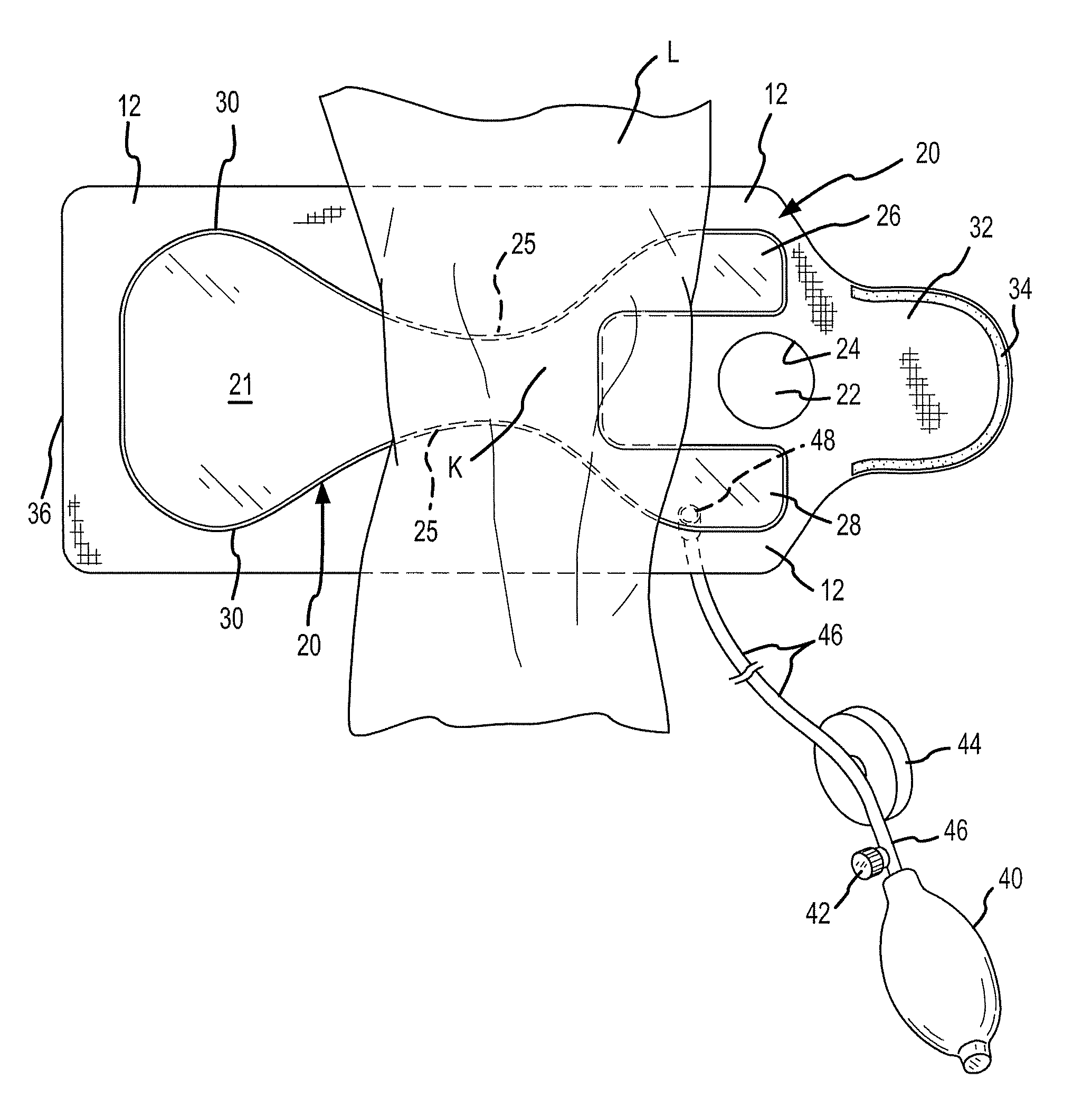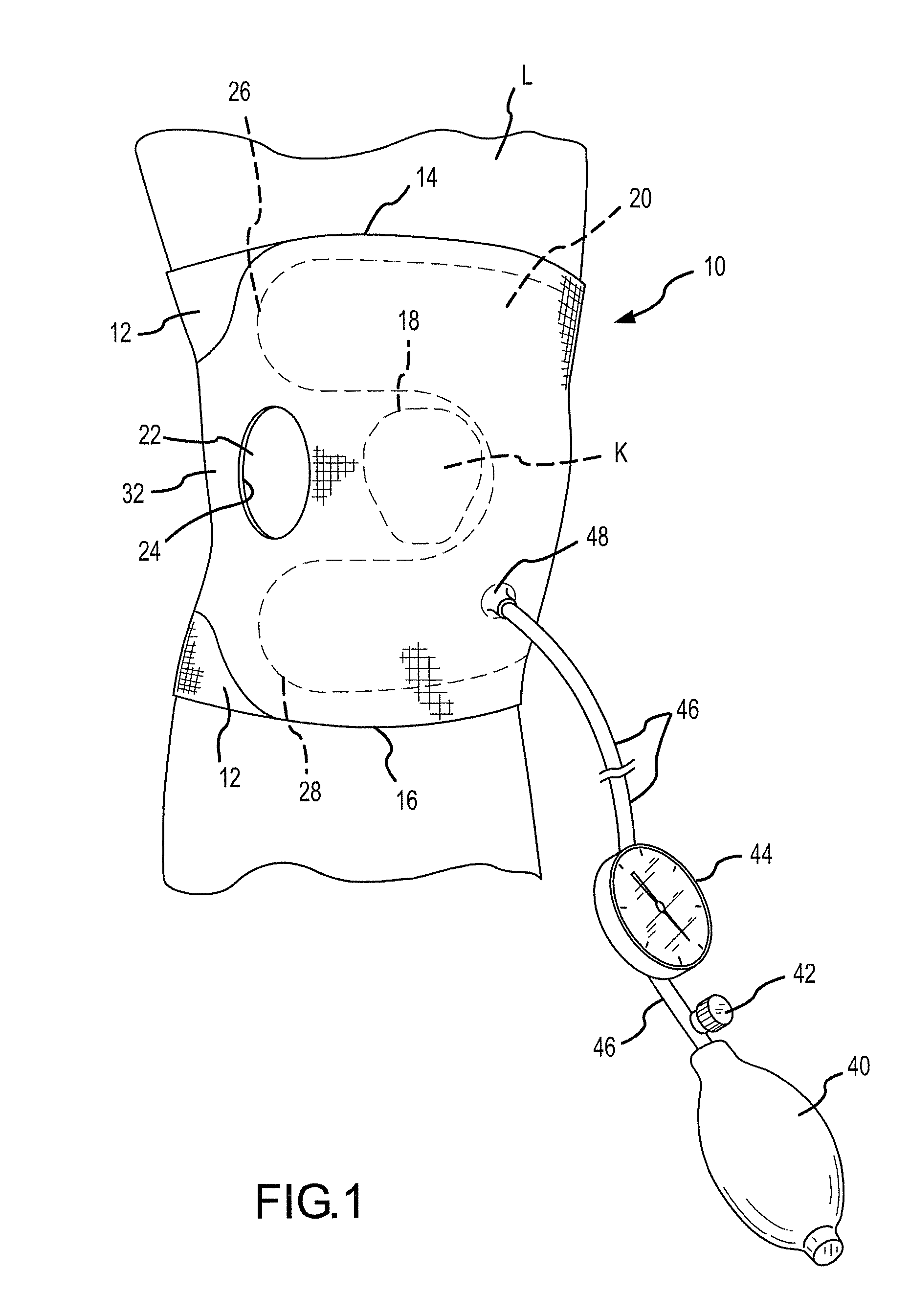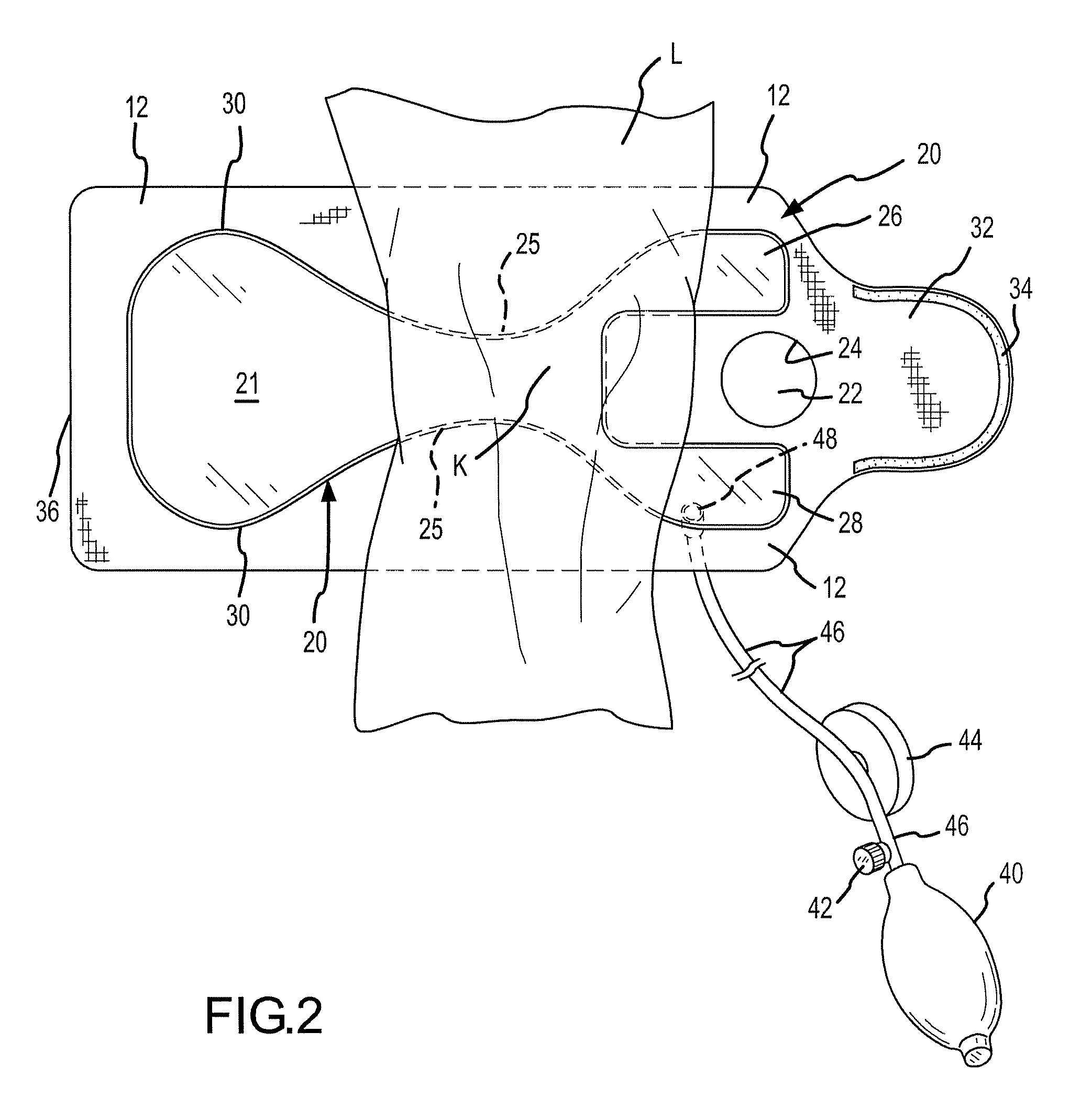Joint aspirate facilitating device
a technology of aspiration device and joint, which is applied in the field of orthopaedic devices, can solve the problems of increasing costs, difficulty in performing knee aspiration, and lack of prior art devices providing adequate functionality for facilitating joint aspiration procedures, etc., and achieves the effect of increasing the capacity of a medical practitioner, increasing the size and pressure of the fluid sac, and increasing the volume and pressure of the joint fluid
- Summary
- Abstract
- Description
- Claims
- Application Information
AI Technical Summary
Benefits of technology
Problems solved by technology
Method used
Image
Examples
Embodiment Construction
[0025]FIGS. 1 and 2 illustrate a first embodiment of the joint aspirating device of the present invention. In this embodiment, the device is used for facilitating aspiration of the knee joint. The aspirating device 10 includes a main panel or body 12 made of a flexible material that is wrapped around the joint. A bladder 20 is used to selectively apply pressure to the joint in order to cause joint fluid displacement to a targeted location. Preferably, the material is flexible but not elastomeric / elastic, since it is desirable to immobilize the joint so that the inflatable bladder 20 precisely displaces the joint fluid without deformation or stretching of the main panel. As shown, the main panel 12 is orientated with respect to the leg L of the patient so that upper and lower edges 14 and 16 extend transversely. One longitudinal side of the main panel 12 is defined by edge 36. The opposite longitudinal side is defined by flap 32 that is used to secure the device to the patient. As sh...
PUM
 Login to View More
Login to View More Abstract
Description
Claims
Application Information
 Login to View More
Login to View More - R&D
- Intellectual Property
- Life Sciences
- Materials
- Tech Scout
- Unparalleled Data Quality
- Higher Quality Content
- 60% Fewer Hallucinations
Browse by: Latest US Patents, China's latest patents, Technical Efficacy Thesaurus, Application Domain, Technology Topic, Popular Technical Reports.
© 2025 PatSnap. All rights reserved.Legal|Privacy policy|Modern Slavery Act Transparency Statement|Sitemap|About US| Contact US: help@patsnap.com



